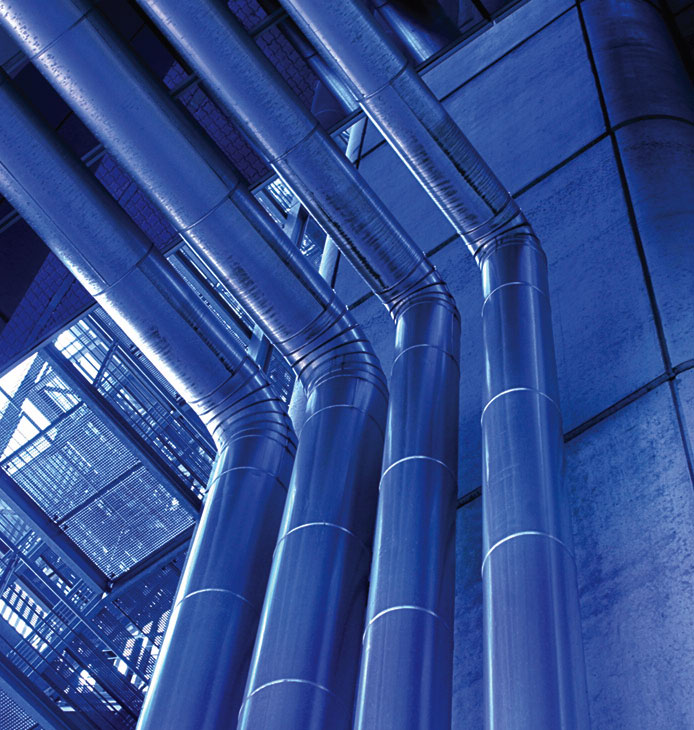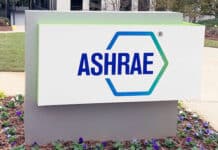
By Ron Jarnagin
Published in the January 2012 issue of Today’s Facility Manager
As with most industries, leadership must be present in order for the buildings industry to thrive and progress. Fifty percent of the leadership puzzle is having the vision, seeing where it may lead, and being able to articulate what’s on the horizon. The other 50% is looking back to see if anyone is following. This is because leaders bring people with them—they don’t go alone.
Every person involved in a built environment discipline, including members of American Society of Heating, Refrigerating and Air-Conditioning Engineers (ASHRAE), can draw on his or her leadership roles to strengthen and sustain the buildings industry. There is an inherent impetus to deliver and maintain better buildings.
Currently, there are facilities professionals who procure property who do not get what they want or need from their buildings. This means that engineers have to do a better job in their designs, contractors have to do a better job putting designs together, and commissioning agents need to make sure everything works as intended.
And it’s crucial for facility management (FM) professionals to be trained in proper techniques as well. The learning has to go all the way to the end of the process to be successful.
Integrating The Strategies
One way to do this is by opening channels of communication through integrated design. Why is this so vital to the future of the buildings industry? Performance begins with integrated building design where everyone on the building team comes together. This process ensures energy efficiency at the design stage and transcends into the construction, the commissioning, the manufacturing, and the operational stages. Obviously, there cannot be an integrated building design process without involving manufacturers and suppliers, architects, contractors, commissioning agents, consultants, and building owners and facility managers (fms).
One of ASHRAE’s roles in this process is to provide technical guidance to help further the collaborative development among the built environment disciplines. The Association seeks to create a worldwide best practices data bank of innovative and successful technologies that can serve the building industry and help fms stay on top of HVAC trends.
Energy Efficiency Key
A strong focus of ASHRAE and the industry overall is to save energy in existing buildings. During ASHRAE’s first Net Zero Energy Building conference in 2009, one of the speakers stated that if every new building from that day forward was designed as net zero, only 15% of the marketplace would be impacted by the year 2030.
Approximately 86% of U.S. annual building construction expenditures relate to renovation of existing buildings (versus new construction). Even more importantly, analysis of many of those new buildings indicates their performance significantly deteriorates in the first three years of operation (some say as much as 30%)—even those designed as “high energy efficient” green buildings. Research also has shown the potential for a 10% to 40% reduction in energy use simply by changing operational strategies.
The greatest opportunity for overall reduction in the U.S. primary energy use lies within existing building stock. Hence, members of the industry must deliver and maintain better buildings.
Climate change policy, in the form of local and state green building and energy efficiency codes, land use policy, and carbon regulation has emerged in recent years. There are also efforts toward reduction of greenhouse gas emissions through tenant space requirements, local building codes, and the surge in green buildings. Proposed carbon legislation at the federal level may impact building operating costs if enacted into law.
Opportunities for improved energy efficiency are under realized in existing buildings, particularly in the investment property sector. This is because the developer who pays the first cost or the landlord who makes a capital investment is often not the direct beneficiary of the resulting reduced operating costs—the occupant is. However, this is changing as more organizations seek energy efficient buildings and incorporate performance into their site selection criteria.
However, owners who authorize energy audits and retrocommissioning and seize opportunities to improve efficiency through operational adjustments are winning the battle against rising prices. Plus, new technologies that make equipment more efficient, coupled with rising energy costs, significantly improve the financial returns on investment in new equipment. And for planned replacements, tax credits are available for new energy efficient technologies and on-site power generation. The bottom line: energy efficient green buildings aren’t just good for the environment, they are good for business.
Putting Into Practice
There are practical tips fms can use when seeking to improve energy efficiency in their buildings. The ASHRAE “Energy Efficiency Guide for Existing Commercial Buildings: The Business Case for Building Owners and Managers” is one resource. In order to improve the performance of buildings, fms can employ the following strategies:
- Measure the energy performance and carbon emissions.
- Evaluate building energy performance, and set goals that are in line with assets for company strategy.
- Implement no cost and low cost operational adjustments to improve operational efficiency.
- Conduct an internal energy study/audit (using ASHRAE’s “Procedures for Commercial Building Energy Audits” as a basis) or have the facility retrocommissioned by a certified retrocommissioning firm. This activity may result in a modification to the original estimated budget amount.
- Evaluate, develop a plan for, and implement energy efficiency measures identified in the audits or retrocommissioning.
- Take an integrated, forward thinking approach to planned replacements—staging replacements and evaluating new energy efficient technologies, on-site power generation, and available tax credits.
- Incorporate energy management into standard policies and procedures—procurement, operations and maintenance, and preventive maintenance—and ensure ongoing energy performance tracking.
Improving energy use all comes down to green—the green of efficiency and resource sustainability as well as the green of money. To achieve true sustainability in the building industry, all stakeholders must adopt the attitude of making buildings better.
Jarnagin is a staff scientist at the Pacific Northwest National Laboratory in Richland, WA. He is currently serving as the 2011-12 president of ASHRAE.



















![[VIDEO] Collect Asset Data at the Speed of Walking a Building](https://facilityexecutive.com/wp-content/uploads/2024/02/maxresdefault-324x160.jpg)